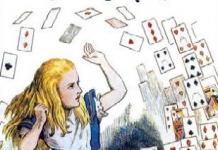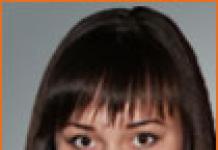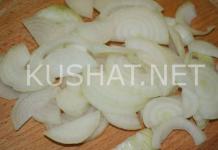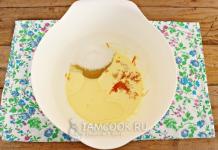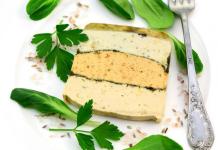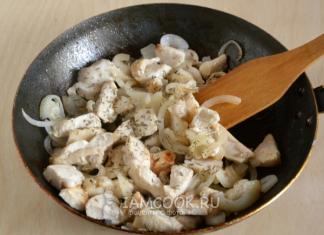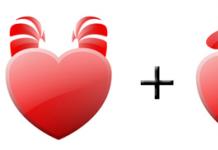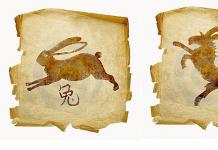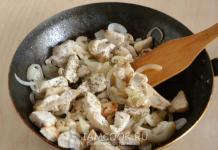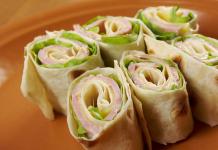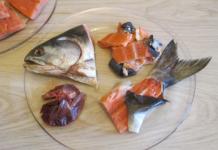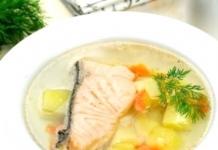I would like to continue the theme of painting design, touched upon earlier.
From this article you will learn how to properly design graphic and watercolor works; I will show you two ways to make mats with your own hands.
Drawings and watercolors drawn on paper require registration in passe-partout.
A passe-partout is an additional background field around an image, usually a cardboard “window” that separates the painting from the frame.
For oil paintings you don't need a mat. They are directly inserted into the frame and framed by it.
But with graphic works the situation is different; for them it is customary to add a background of a white or colored field around the drawing, and only then insert it into the frame.
Self the word "passepartout" French origin and translates as "suitable for everything, magic key."
This “magic” material allows the painting to “breathe”, giving it free space around. And the viewer, in turn, concentrates on the image!
The size of the fields of the finished passe-partout can be very different, but, as a rule, varies between 3-10 cm.
But the size is 5 cm is the recognized standard of the golden ratio among professionals. By the way, it is this one that is used much more often than others!
I will note 2 important requirements for the passe-partout:
- the material for the mat should be dense, it should not warp or ripple due to humidity
A bevel inward to the work is desirable (gives a beautiful white edge)
It is almost impossible to make such a mat from thick cardboard and with a bevel yourself. True, there is a special cutting tool. But purchasing it for one or two jobs is pointless.
Therefore, if possible, it is better to contact a framing workshop. There they will help you professionally frame your work and choose the appropriate mat.
However, if you have a lot of work accumulated, and professional decoration is beyond your means, then you can try to decorate the paintings at home.
In the video below I'll show you how to do it!

To make a passe-partout with your own hands you will need:
- a sheet of whatman paper, pastel paper or cardboard (larger in size than the work format)
- ruler (preferably metal)
- paper cutting knife
- scissors
- pencil
- masking tape
- window cleaner
- rag
- calculator
- photo frame
how to make a passe-partout with your own hands: method No. 1
In this fastening method, we cut out a window from colored or white cardboard.
As you noticed, here we attached the watercolor to the backing. And they did it with masking tape. This option is quite environmentally friendly, but still... Even by attaching the paper to one side, we thereby deprive it of the ability to breathe (to expand and contract when the humidity in the room changes).
Therefore, I would like to offer an option for a more economical passe-partout, when we do not attach the work, but the passe-partout itself holds it:
how to make a passe-partout with your own hands: method No. 2
To allow the pattern to “breathe”, we use a fastening that does not limit it, creating a special “envelope”.
As a result, such a mat has a certain thickness, which looks even more presentable in appearance compared to the first option.
True, this option is more suitable for small-format works.
I hope these videos will help you cut out mats with your own hands correctly.
When making a mat for a painting, it is important choose the right color.
However, sometimes you can use quite bright colors. For example, I love burgundy, gray-green, and discreet blue. But, of course, such a decision must be justified in some way. The color of the mat should be in harmony with the color of the picture and match the tone of one of the elements of the picture.
And, of course, the color of the mat should be in harmony with the interior in which the painting will hang.
If we talk about choosing a mat for black and white graphics, then achromatic (gray tones), as well as discreet cream ones, are best suited for it.
White color visually enlarges the picture, it is good for bright multi-color images. However, white somewhat blurs the attention from the picture.
And here dark mats, on the contrary, they collect attention on the image, focus on it, make the picture more complete and isolated. But in this case, the picture should be more complete and harmonious in color.
In conclusion, I want to say that no matter what stage of learning to draw you are, your drawings and watercolors must be framed and hung on the walls! I assure you, even a poor sketch in a mat looks different, more complete, integral, and important.
So be sure to select a few of your drawings today and cut out a mat for them, at least from a thick white sheet of paper. Look at your work from a different angle!
A painting without a frame is like an actor without an audience. Both are incomplete. Nothing decorates an image more than a skillfully selected frame and mat. This adds effectiveness and completeness to it. A painting, like a photograph, becomes an independent object that attracts attention and delights.
What is passe-partout and what is it used for?
On the question of definition. A passe-partout is a wide frame made of multi-layer cardboard that frames a drawing, photograph, collage or other work of art. This creates a boundary between the painting and the frame. It is customary to highlight portraits in this way.
The passe-partout frame is used for several purposes. The main ones include:
- emphasis on individual details of the image, enhancing the impact on the viewer;
- facilitating the perception of the work due to its separation from the rest of the interior;
- protection of a piece of art from the negative effects of the environment.
In addition, mats often act as an element of art.
Why is symmetry harmful?
Most of the finished mats have the same dimensions on all sides. This move is justified from a commercial point of view; it can be used for both directions: book and landscape. However, this mat format is not always appropriate from an aesthetic point of view.
This fact is explained by the peculiarities of human visual perception. When considering vertical objects, the most harmonious will be the one whose lower part has more weight. This fact is known and widely used in the press. For example, the Latin letter S or the number 8 are asymmetrical. Their underparts are slightly enlarged, but overall they look very harmonious.
The same thing happens with passe-partout. If it is slightly enlarged in the lower part, then the whole picture will be perceived better.
It is worth noting that a symmetrical mat frame is not always a bad thing. For example, if the image itself has a bright accent at the bottom, then no additional enhancement is required. Another situation where there is no need for an asymmetrical mat is educational and scientific illustrations.
Selection principles
The first thing you need to pay attention to is the color of the cardboard. Firstly, it must be different from the shade of the frame. Then everything is built on the effect that you want to achieve. If you need to highlight an image, it is better to place it on a very light background, almost white or even completely snow-white. When it is necessary to reduce the design, it is limited to a dark mat. The most neutral shade is gray. He practically does not interact with the image.

When choosing a matte shade, it is recommended to choose calm and muted tones. Let it be a little similar to the shade that is used in the image itself. Then the mat for the drawing will effectively emphasize the advantages. In some cases, this method can muffle or completely hide imperfections.
In addition, ornaments and lines can be applied to the mat. Then they simply must form a single whole with the object of art.
The second point is the choice of frame. It should fit perfectly with the image. A common mistake is choosing a frame to match the furniture and the color of the walls.
There are times when you should abandon the mat - these are oil paintings and a huge image format. In the first case, there is simply no need to further decorate them, and in the second, the size of the frame can disrupt the perception of the piece of art. There are also situations when the engravings themselves already contain decorative elements located along the edges. Then they also do not need to be put away in the mat.
A few words about cardboard
Its thickness usually varies from 0.5 to 3 millimeters. Passepartout cardboard can be colored or plain. In the second case, the color of the cut does not differ from its front side. But the first option has a different shade on the cut. There is such a mat that its surface has a textured pattern.
In addition, cardboard can be different in composition. The most popular one has a neutral level of acidity. It is made from cellulose, which contains lignin. The latter undergoes oxidation and spoils the drawing paper.
Museum quality cardboard has the best properties. It is less susceptible to fungus.
On the last step is cardboard with conservation quality. It is made of natural cotton and does not allow fungus to develop at all.
How to determine the size of a passe-partout?
Fields that are too small will not perform their function. But, on the other hand, an overly wide mat will distract attention from the object of art. As a result, the image will simply be lost.

For the side and top margins, there is a rule: the width of the mat should be between a third and a half of the side of the image that is smaller. This is in most cases. But there are special situations when the side parts can be made larger. An example would be an unbalanced or very dense image.
A wide mat can be used in the following cases:
- a large object is depicted over almost the entire drawing;
- portrait or still life;
- the landscape lacks the sky (enlarge the strip at the top) or the sea (make the bottom even larger).
An example of a passe-partout frame for a 10 x 15 photograph would be the following dimensions: on the sides 5 cm, on the top 4 cm, on the bottom 6 cm.
What are the options for passe-partout?
With edging. This is a plank made of wood or plastic. Its appearance can be quite varied. From smooth to carved, from tinted and painted to aged. The edging plays the role of a partition between the passe-partout and the drawing and is an additional decor.

Multi-layer passe-partout . When two or three cardboard options are used. They have different shades, but are sure to be combined with the image. Moreover, the inner layer can be made lighter or darker than the outer one.
Methods for arranging a passe-partout
First: passe-partout under the picture . In this case, the image is fixed on a solid sheet of cardboard. For this purpose, you can use rubber glue, which can be easily removed without damaging the design. Another approach is to use corners or double-sided sticky notes.
This method will not work if you plan to place the photo under glass. It may stick tightly and be irretrievably lost. It should be noted that such a mat for drawing will add rigidity to the children's craft, as a result of which it can be easily placed on the wall.

Second method: passe-partout over the drawing. It looks like a tight frame under which the finished product is placed. Here you need to take two sheets of cardboard. The thinner one will go on the substrate, and the thicker one will be used to make a frame. In the latter, you need to cut a window to the size of the design, leaving an allowance of 3 mm. It will make an inclined cut at an angle of 45 degrees. This bevel gives a smooth transition from the image to the mat. You need to attach the picture to the backing, and then glue the top frame to its edges with double-sided adhesive tape.
The latter option requires more material costs, but also looks more solid. In addition, with its help you can cover a photograph with glass and not worry that after a while it will be impossible to get it out.
The desire to decorate one’s home characterizes both our ancestors and our contemporaries. Images that are usually chosen for decoration are completed in the form of a frame if they have obvious artistic value. For our ancestors it was simply an ornamental border on a wall or page of an illustrated book. Depending on the significance of the masterpiece on display and the taste of the owner, the frames are made from an ordinary wooden or plastic profile or baguette, rich in decorative patterns with gilding and inlay.
What is a baguette exclusively suitable for?A baguette harmoniously frames an oil painting on canvas; tapestries and full-length satin stitch and cross stitch embroideries; panels made of suede, leather, fur; batik; artistic works made of plaster and salt dough. For photographs, watercolors, gouache or pastel paintings, the frames will be tight. They will need air around the image and protection from external influences. Here you can’t do without a passe-partout!
What is passe-partout
If, literally, from French - “passing everywhere.” Based on the design function, it is a piece of paper or cardboard that, framing the image, separates it from the frame. Passepartout can be classified according to the manufacturing method:
- simple (a photograph or drawing is pasted onto a larger piece of cardboard inserted into a frame);
- cut out (the image is inserted into a hole cut out in the middle 5mm smaller than the size of the picture that is pasted behind the cardboard);
- voluminous (thickening the edge of the passe-partout cutout creates the illusion of depth and perspective).
- classic, made in white and gray tones with a strict frame, based on the principle of contrast or similarity;
- French, made of medium-weight paper, the colors of the main tone of the background of the picture; a special detail is the outline of the window contour in two or three lines;
- English mat, is characterized by an increase or decrease in the thickness of the cardboard due to the increase from the design to the edge or vice versa.
What are the artistic merits of mats?
The mat, expanding the visual space around the image, favorably emphasizes its advantages and enhances the brightness of the colors due to the neutral white field. Creates a mood by emphasizing the elegance of the graphic design. Brings a work of art to the fore, or gives us the opportunity to look at it as if through a window. Passepartouts help to combine the works of different authors into a single composition, or highlight the features of each work on the wall. Passepartout successfully corrects the shortcomings of our vision, which weighs down the lower part of any image. Therefore, by increasing the bottom margin when creating a vertical composition, or the side margins when creating a horizontal one, we make a visual correction to the perception of the work.
Why can’t you get by with purchased frames with mats?
Simply because we cannot find a standard passe-partout for each of our ideas. Creativity begets creativity. We made an interesting photo collage - we needed a special mat, we worked some magic with pieces of fabric over the appliqué - make a suitable mat. Thus, an urgent need arose to make with one’s own hands something that might be possible to order in a workshop, but for a lot of money. And in the process of amateur performances, it turned out that the mat itself can be decorated, giving it a childish or romantic flavor, using fabric and threads, blending and embossing techniques.
How to make a mat for drawing with your own hands
To make it, you will need a sheet of cardboard 3mm thick, preferably white (once you have mastered the technique, you will be able to choose the color to your taste). Rubber glue, photo corners, or tape. Paper knife, pencil, ruler (metal). Fine-grit sandpaper or just a nail file. The algorithm of action is as follows:
- We prepare a passe-partout from a sheet of cardboard, calculating it according to the dimensions of the picture: h+5cm and S+5cm, if you want the field between the frame and the picture to be 4cm wide. (h-height and S-width). We focus on a suitable frame.
- We find the middle in the prepared piece of cardboard and, based on the starting point, build a rectangle with sides 1 cm smaller than your drawing.
- Carefully using a paper knife, sliding along a metal ruler, cut out the middle and sand the roughness of the cut inside the window.
- We measure 0.5 cm from the sides of the window and outline a rectangle with a thin line.
- We cut the corners of the window at 45 degrees to the corners of the drawn rectangle.
- Using a ruler, with light pressure, barely touching, we draw a knife along the pencil lines around the window, trying not to cut through the cardboard.
- We bend the edges of the window along the cut lines. We get the cardboard flap inside.
- We insert the drawing on the reverse side and attach it to the cardboard (glue, corners, tape).
- You can decorate the passe-partout, or better yet, simply insert it into a suitable frame.
Framing workshop in Moscow located on the street. Gilyarovsky, has a convenient location in close proximity to the Prospekt Mira metro station.
Framing Workshop expands the scope of activities to provide design services individuals and organizations in Moscow And Moscow region. Framing Workshop provides services for cutting out the passe-partout, including double and triple passe-partout. Equipment framing workshop allows cut different in shape passe-partout, including figure. Cutting out the passe-partout- a service without which it is impossible to imagine a professional design service.
Picture frames
Frame with passe-partout
Order frames from baguette. Let's make urgently framework.
Workshop manufactures baguette frames from wooden, plastic And aluminum baguette the best baguette European companies. When selecting picture frames It is necessary to take into account the genre of painting. Manufacturing frames with passe-partout.
Where to buy photo frames
Photo frames with mats Can buy, having ordered baguette making according to exact dimensions photos. Making frames to order. Making frames For photos from the passe-partout. Buy photo frames possible in framing workshop. Metal frames with passe-partout V retail And wholesale cheap. Metal frames with glass. Baguette frames with your own hands.
Baguette design
What you need to know to order a framing frame
To order baguette frame, need to choose decor for your work. What does it consist of? baguette decor? Can only consist of framework, maybe complex and include passe-partout, edging for passe-partout, glass, backdrop, , lamination or embossing.
Design of works in a baguette (baguette work) is one of the services provided by our framing workshop.
What can be packaged into a baguette?
Photographs, reproductions, engravings, watercolors, paintings, children's drawings and embroideries. Our workshop prepares paintings, watercolors, drawings, photographs, posters and banners in frames and mats. From us you can order embroidery, three-dimensional objects, tapestries, and batik to be framed and matted. Wooden frames are an integral attribute of an exquisitely designed interior. The use of natural wood baguette in decorative elements will emphasize the grace and elegance of the decor in the house. In our workshop, when decorating products, we use a decorative edging, which is attached either to a baguette frame or to a mat.
Where to order and buy a passe-partout
Buy passe-partout cheap
Buy a passe-partout cheap And fast V center Moscow. To buy passe-partout we need him first order. Where to order a passe-partout. Order a passe-partout possible in framing workshop. To order passe-partout, need to choose decor for your work. What does it consist of? decor? Can only consist of framework, maybe complex and include glass, passe-partout, edging for passe-partout, backdrop, rolling the image onto the base, lamination or embossing.
Cutting from design paper. Cutting out the background. Usually passe-partout cut out made of special cardboard with a huge number of shades and textures. Samples baguette And cardboard for passe-partout You can always look at the reception center framing workshop.
Passepartout for photos. Passepartout cheap. Buy a couple in point accepting orders framing workshop.
Moscow
Workshop is located in Moscow, has a convenient location in close proximity to the Prospekt Mira metro station.
Moscow- capital of the Russian Federation, administrative center Central federal districts And Moscow region.
Making mirrors
Colored mirrors
Colored mirrors(usually golden, silver, green and blue) come in two types:
- manufactured from glass, tinted in mass;
- mirror With in color reflective layer.
Modern it’s simply impossible to imagine without tinted mirrors weird shape. Minimalism does not tolerate excesses and bright colors, but color mirror will delicately soften its emphasized severity. There are many possible options registration mirrors: from massive
baroque ram with bronze candelabra thin metal edging V style high tech.
Big choice mirror frames.
Mirrors in gold baguette.
Order mirror frames V framing workshop.
Frame gives mirror decorativeness and determines its belonging to a specific style. Gold frame for mirror V living room.
Plastic frames for mirrors V hallway, kitchen And bathroom.
Mirror can “amaze” with an interesting shape and original frame. By using mirrors you can hide the shortcomings of the home layout. Mirror in a wooden frame for the living room. Mirror in the interior it creates the effect of expanding space. Usually mirrors placed in hallway, bedroom, bathroom.
Mirrors large sizes.
Making large mirrors.
Prices on mirrors.
Glass cutting, mirrors.
Ordering frame glass
Glass cutout
Glass on cutout. Frames with 2mm glass. Glass cutting. Let's cut it glass 2mm any size and shape, in any quantity cheap. Straight and shaped edge processing (grinding and polishing) glass , manufacturing internal cutouts.
Manufacturing of subframes
- Manufacturing of subframes
- Types of subframes
- Modular subframe
- Blind subframe
- Ordering stretchers
- Cheap subframes
- Canvas stretching
Frame backdrop
Back cardboard (backdrop) For paintings. Backdrop- this is the cardboard that covers the back framed paintings. Correct selection backdrop provides not only protection paintings from external influences (moisture, dust), but also provides an aesthetic appearance. Backdrop presses tightly picture To glass, ensuring a stationary position paintings inside baguette frame. In our work we use cardboard for backdrop thick 2.0 mm or MDF sanded on both sides (hardboard) thick 2.5 mm. For every day frame, which is manufactured in our framing workshop we mount a suspension (ring cord or toothed suspension) free of charge, thereby ensuring a neat rear view, with a gap between backdrop And framed closed with paper tape.
Picture frames
Ordering picture frames
Framing Workshop draws up V baguette paintings, watercolors, drawings, photographs, posters, mirrors, etc. Large picture frames. Artists attach great importance to choice framing for their paintings. Many great artists made sketches of the elements of a baguette and even made it themselves made. Golden frames For paintings. Ordering picture frames. Picture frames Can buy, previously having ordered in our framing workshop. Prices on picture frames.
Baguette and mat for watercolor paintings
Using the technique of watercolor painting you can create paintings in the genre of landscape, still life, portrait. Transparency and softness of the thinnest paint layer paintings are characteristic properties of watercolor painting. For framing watercolors It is advisable to use a passe-partout and a not very wide baguette. Framing V wooden baguette. Frames For watercolor paintings.
Passepartout for drawing
Design of graphics with mats
Also, the design style of the graphic sheet has long been established. It is usually included in narrow light frame, restrained in color and texture. However, unlike painters graphics innovate: wide clean Olya, separating drawing from framework. This is the so called passe-partout- colored cardboard in which a window is cut out. Passepartout its cutout overlaps image. For some types of graphics, margins are obtained when printing on the same sheet, so you can do without passe-partout.
Passepartout for designing drawings. Drawings are created by artists in the process of studying nature (sketches, studies), when searching for compositional solutions for graphic, painting and sculptural works (sketches, cardboards), when marking picturesque paintings (preparatory drawing for painting). Professional decor graphics, photos, documents With using passe-partout And wooden baguette. In our workshop you can choose samples baguette And passe-partout and order decoration for graphics, photographs, posters. The artistic value of a baguette depends on the profile and relief pattern. Pencil drawings look better in a modest narrow baguette ( metal or wooden).
Frames and mats for photographs
Photos can be framed in the workshop. View baguette depends on the type of images on photographs(portrait, landscape, children's photos). Passepartout for photos.
Cutting out photos. At photo design can be used passe-partout. TO passe-partout a slip (edging along the edge of the window) may be offered.
Buy photo frames possible in framing workshop.
Plastic photo frames practical, easy and cheap. They are great for all types photos And imitate metal And wooden framework. Splendor and nobility metal. Very popular silver matte metal frames.
Metal photo frames are very expensive cheap, because the material for them manufacturing serves inexpensive aluminum. At small price metal frames have a lot of advantages. Elegance of form and mesmerizing beauty metal sometimes forces herself frame"compete with photography. Therefore, it is important that the content is worthy of the form. Such within professionally made ones will look most harmonious portrait photos. For Exhibitions « My Africa» Pascal Maitre All photos were " knurled" on foam board And laminated. None special registration, just bright imprints of a strange life were hung along the walls. This method is one of the most cheap and, perhaps, the most reliable.
Diplomas - Design with passe-partout
Decor diplomas With passe-partout. Colored frames with passe-partout for certificates, diplomas, diplomas. Metal framework standard sizes for certificates, diplomas, posters, color photographs. Frames with mat A4. Framing Workshop accepts orders on manufacturing metal frames with passe-partout both cash and non-cash payments. For diplomas, certificates And kart V framing workshop You can order lamination.
Baguette and passe-partout for cards
Baguette and passe-partout For kart. Large cards are often found. In cases where increased strength is required, metal baguette- the best choice. In frames from metal baguette You can place various cards, posters, banners. Antique geographical maps are the best decoration for your office.
Making mats for embroidery
Hand-embroidered work and framed in a beautiful frame can be a wonderful gift for a loved one. Baguette and passe-partout For embroidery. Golden frames For embroidery icons. Plastic frames For embroidery. If you embroider paintings, then sooner or later you will have to choose for her frame. Choosing frame For registration embroidery, it should be remembered that style, color, width and other features baguette for frame directly depend on the plot, style, color scheme and size embroidered pictures. To each embroidered picture select your own unique framing. Choice frames For embroidered pictures also depends on how it will be used embroidery design passe-partout or not.
Majority embroidered paintings looks more effective if registration used passe-partout. Passepartout make single or double, sometimes triple. Selecting a triple mat is a complex process even for a specialist (designer). The embroidery is stretched so that the cells of the canvas run parallel to the cut of the cardboard passe-partout. More and more widespread paintings, beaded. Wooden frames With passe-partout.
Tapestry picture frames
A tapestry is a hand-woven carpet-picture. Tapestries were woven according to designs using colored wool and silk threads. Baguette for pictures from tapestry are chosen based on the plot depicted on the tapestry. Golden frames For tapestries. Most often, a wooden baguette is used in brown shades, sometimes in gold, less often in silver. A3 frames for tapestries.
When you embroider, write, or create paintings, it is important to give them a finished look. That is why needlewomen pay special attention to design. The paintings are decorated professionally, but sometimes not cheaply. So let's see how to make a passe-partout with your own hands.
What is it for?
A passe-partout is a cardboard in the shape of a quadrangle, circle or oval with a hole (of the same shape) into which a picture or photo is inserted. It is placed over the painting and covered by a frame with or without glass. For professional artists and designers, the passe-partout serves as a “board of honor,” that is, the author’s signature is left on it.
Its goal is to create harmony between the painting, the color of the frame and the design of the room. For example, for an embroidered picture of a spring garden with a predominance of pink and green tones, a frame in the same shades is suitable. But if the room has pink wallpaper, then a mat? In this case, a double design of green and light pink and a mahogany frame with a golden pattern will be most suitable.
Using a cardboard frame, you can achieve the desired size of the painting. For example, you have embroidery of non-standard sizes, and no frame can fit. Therefore, you select the most advantageous frame in color and make a frame according to its dimensions with a cutout for embroidery.
Method 1: how to make a passe-partout with your own hands

Before making a passe-partout with your own hands, the embroidery needs to be washed, ironed, and stretched onto cardboard. To do this, cut cardboard to the size of the embroidery, then use nails to fix the position of the embroidery on the front side. And on the reverse side, fasten the edges with threads using a zigzag seam or using double-sided tape. And then you begin to design the picture.
Method 2: how to make a passe-partout for a drawing or photograph
Drawing and photography have a finer structure compared to embroidery. In addition, they are easier to work with: just make a frame and insert everything into the frame. You can make a simple color design from paper, but then the character of the image will be lost. It is better to emphasize the individuality of the drawing:

So, how to make a passe-partout with your own hands to highlight the character of the picture? Remember just one rule: you can format your work many times. For example, during the winter blues you decided to create a spring mood and decorated the mat with dandelions, and in the summer you wanted to add strawberries to the frame. Experiment - and over time you will learn how to design paintings professionally the first time!


